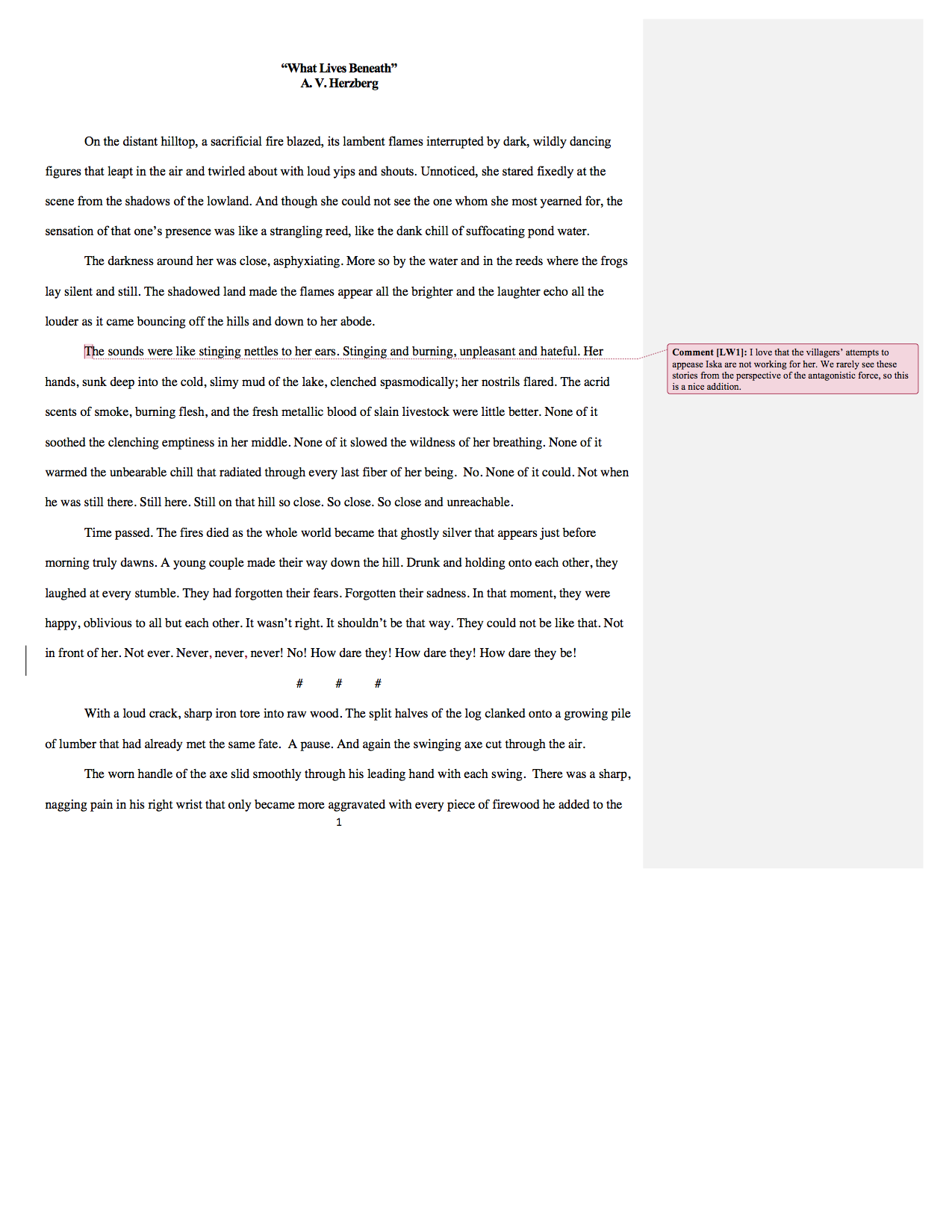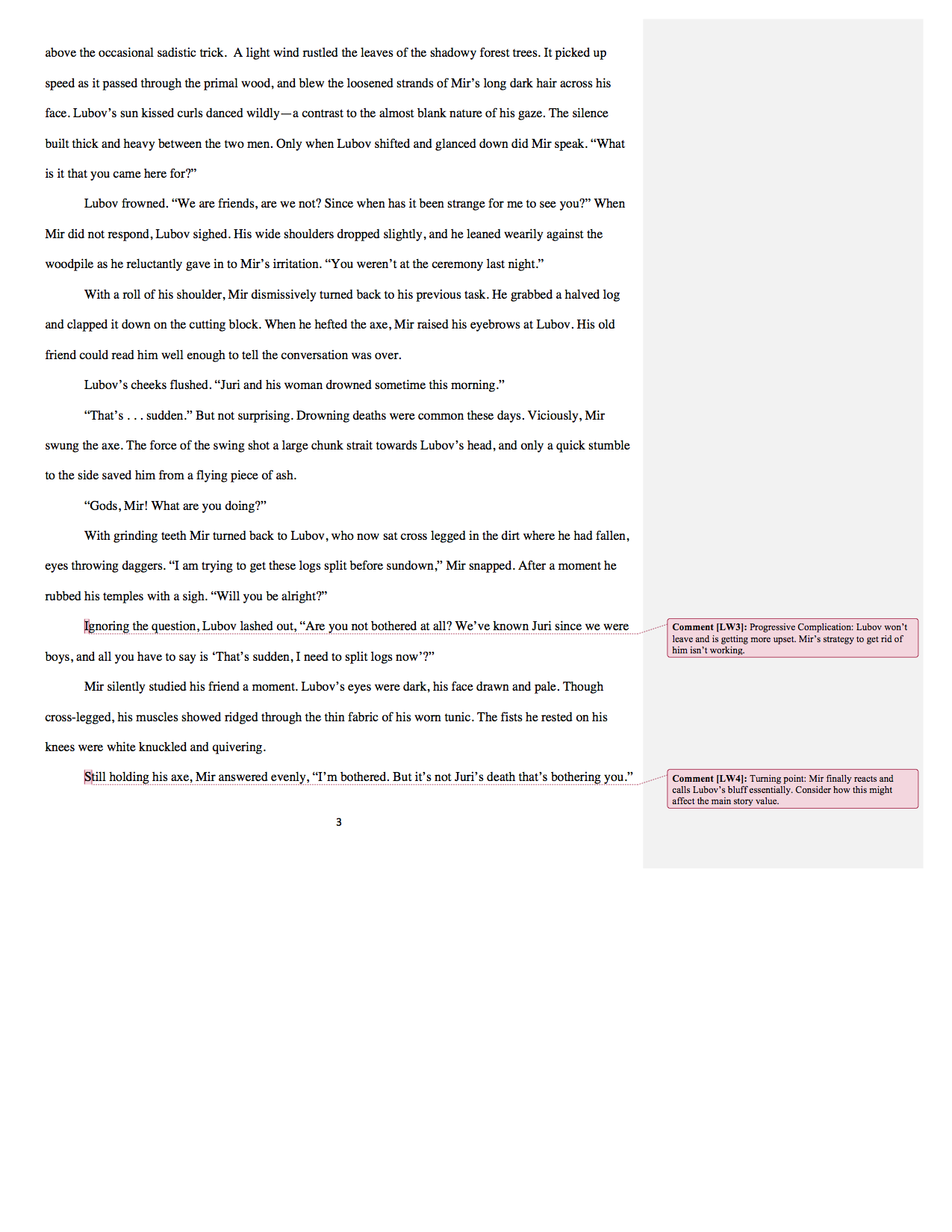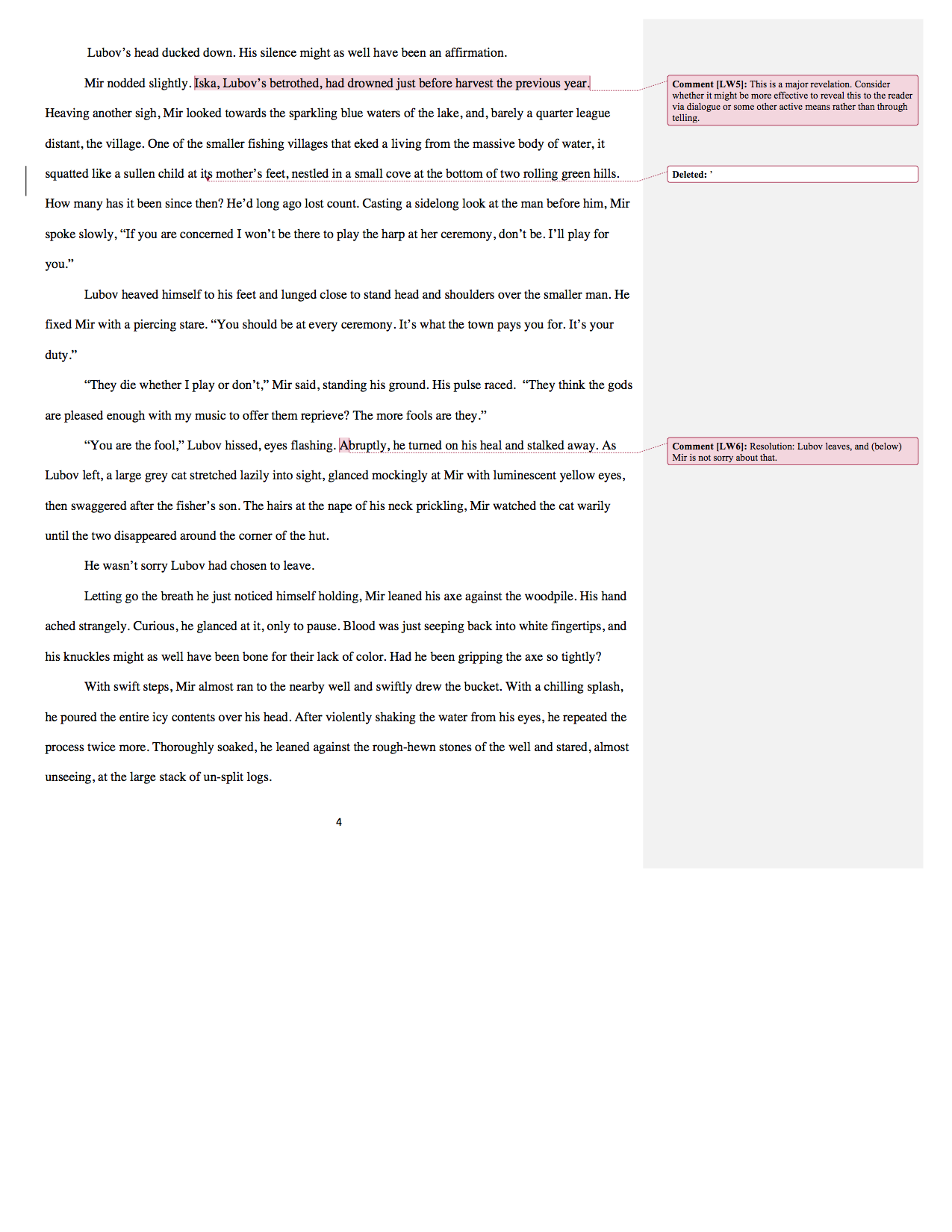In this episode, fellow Story Grid certified editor Jay Peters and I critique the beginning of “What Lives Beneath,” a short story by A.V. Herzberg. The author kindly shared a synopsis of the entire story, which allowed us to talk about how the global genre could be Obsession Love Story or Horror. Figuring out your global or main genre is important for lots of reasons, but it’s important to understand that genres implicate story values (in other words, the external change that happens from the beginning to the end of the story).
Jay and I talked about what the story values would be and then analyzed the scene in the submission, including how the scene changes from beginning to end. Then we talked about ways to strengthen the scene by bringing the scene value shift into closer alignment with that of the overall story.
This week’s editorial mission challenges you to compare the value shifts in your scene to see how they relate to your global story.
Listen to the Writership Podcast
About Our Guest Host
Clark is taking a well-deserved break from the podcast, so today we're joined by Jay Peters, a certified Story Grid editor based in Seattle, WA. You can find out more about Jay on his personal site, and you can follow his NaNoWriMo blog series here.
Wise Words on Story Events
“A Story Event is a meaningful change in the life of the central character. And that change must be expressed as a polar value—life/death, lie/truth, cold/hot, strength/weakness, courage/cowardice, loyalty/betrayal, wisdom/stupidity, known/unknown etc.
All that Story Event implies is that something has to happen.
The scene begins someplace positive and ends negative, or begins negative and ends positive or begins positive and ends doubly positive or begins negative and ends doubly negative … It has to turn. Things have to be different at the end of the event than they were when it began.”
Mentioned on the Show
The Writership Index
Listeners have asked for an index of the podcast episodes and the topics discussed, so we've put together a Google spreadsheet containing details of each episode, its airdate, author name, story title, genre, story type, published location, author website, and topics discussed. Get access to the spreadsheet here.
Join the Writership Book Club!
Join now and you'll get access to a recording of October's meeting, in which we read stories from The Best Science Fiction and Fantasy of the Year, Volume 10 and analyzed them the way Leslie does for a Story Grid Diagnostic. You’ll also be able to join us for our next (online) meeting on November 16. Find out more at Patreon.
where are you in your writing journey?
We really want to know! Click here to tell us where you are in your writing journey in a short, anonymous questionnaire. Your input will help us serve authors better.
Editorial Mission—Scene Value Shifts
To discover if the value shift in a scene is aligned with the value shift in your story, first consider what your genre is and the value change that occurs from the beginning to the end. (Not sure about the value? Access the genre-value-need table from episode 118).
Then read your scene closely to identify how the circumstances or characters change from the beginning to the end. Does the value change in the scene impact the main story value?
If it’s not connected at all, then consider whether you need the scene for some other reason? (Could the scene be shoe leather, meaning that it doesn’t really affect the protagonist’s pursuit of his or her goal?) If you do need the scene, revise it so that it turns on a value that is related to the main story value.
If you get stuck, leave a comment or write to me.
Editing Advice to Our Author
Dear A. V.,
Thanks so much for sharing your story with us! This is a great setup with elements to make a powerful story. We love that you found inspiration in the Slavic mythology. Stories from different times and places create interest and evoke curiosity, which makes the reader more open to the controlling idea of a story. It’s a great way to innovate by telling a familiar story (a love story or horror story) that is also different (a unique setting).
We looked at the synopsis and the elements of the story and concluded that you could easily choose Horror or Obsession Love Story as the global or main genre for your story. If we were working with you as a client, we would talk to your intention for the story so that we could eliminate some of the guesswork. We would ask about which aspect of the story is most fascinating to you, because it’s important to focus on one global genre, even if you include other subplots.
One of the reasons deciding on the global genre is so important is that it determines the life value that describes the main change in the story from the beginning to the end. Let’s break that down a bit further. Stories are about how humans deal with change. If nothing changes in a story, then it’s not very interesting, and we put the book down or stop watching the movie. Genres relate to the nature of the change that occurs (internally or externally) as well as a particular human need that you can track according to Maslow’s Hierarchy of Needs. (Compare this to sales categories, sometimes called genres, which refer to where your book would reside on the shelf in a book store.) To tell whether a story works, one of the things we do is track changes in the main story value across the entire story, and within the acts, sequences, and scenes. You have a short story, so you won’t have major sequences, but we would still look at what changes within the scenes and how it affects the main story value.
In an Obsession Love Story, Desire is the psychological driver, but we’re still on the value scale from Love to Hate. That means that within the love triangle you’ve crafted, each character would start somewhere on the full range of value that includes love and hate and end somewhere else on the range. The Great Gatsby is an example of an Obsession Love Story (and I’m pretty sure the Basic Instinct is as well).
If you focused on the Horror story, you would be in the sub-genre dealing with the Supernatural (the force of antagonism comes from the spirit realm). The range of value in a Horror story is Life to Unconsciousness to Death to a Fate Worse than Death. So Mir, the apparent protagonist in the story, would start out with Life, but might move to Death or a Fate Worse than Death by the end of the story.
To analyze a scene, we ask four preliminary questions:
1. What are the characters literally doing in the scene? (We answer this question just like it sounds. We want to get at what’s happening on the surface.)
Mir is chopping wood and his friend Lubov comes by, but there is considerable tension between them.
2. What is the essential action of what the characters are doing in the scene? We answer this question by looking at the subtext. What’s going on beneath the surface (an appropriate question in more ways than one for your story)? This takes into account what the characters are trying to accomplish in the scene.
Mir is giving Lubov the cold shoulder.
3. What are the life values that change in the scene? Here you can include any value that changes from the beginning of the scene to the end.
Mir is tense without realizing it then becomes tense and being aware of it. Lubov goes from being a source of irritation to leaving. If Mir isn't aware of the death of the couple in the beginning, he is by the end of the conversation, in which case, the value could shift from ignorance to knowledge.
4. Which life value shift applies to or impacts the global story?
Mir is the POV character in this scene, so we would focus on the life value shift from his perspective. When we looked at this, we couldn’t identify a specific value that might apply to one of the potential Global Genres. Now it’s possible that we’re missing some subtext, and it doesn’t have to be on the nose (for example, if the value is Life to Unconsciousness to Death to a Fate Worse than Death, no one has to die or be knocked unconscious to have the value relate to the Global Genre, but as we discussed in the episode, the scene should represent a change that makes it more likely (or not) that Mir is going to die or face a fate worse than death. We talked about how confronting Lubov would encourage him to spring his trap for Mir, so that is an example of something that could bring him closer to death.
Then we look at the Five Commandments of Storytelling:
1. Inciting Incident: This is the event that knocks the POV character’s life or world out of balance within the scene and causes the POV character to want and pursue something: Lubov shows up and interrupts Mir while he’s chopping wood.
2. Progressive Complication/Turning Point: After the inciting incident and a desire or goal arises within the POV character, he or she should face obstacles of increasing difficulty that brings the character to a turning point or point of no return when they must make a decision. The Progressive Complication represents the obstacle that arises just before the turning point. In your scene, the final progressive complication is when Lubov asks Mir if he’s bothered by the deaths of Juri and his woman. The turning point comes immediately afterward when Mir finally reacts and says that he is bothered and he knows that Juri’s death is not Lubov’s main concern. (We’re close to a confrontation here.)
3. Crisis Question: This is the dilemma that arises as a result of the turning point. The dilemma is a best bad choice (the lesser of two evils) or a choice between irreconcilable goods (positive options, but mutually exclusive, and so there is a sacrifice of one for the other). The synopsis says that Mir is struggling with his growing suspicion of Lubov, but I’m not sure this is clear in the story. Mir appears to be struggling with something, but we don’t know what. I wouldn’t recommend telling this in an “on the nose” way, but the content of the dilemma for this scene (even if it’s not about confronting Lubov) should be apparent from what’s happening. (In other words, you wouldn’t need to have Mir thinking something like this: I wonder if I should confront him. If I do, it could cause X. If I don’t it could cause Y. Rather, consider how you might show what his dilemma is through subtext. What would someone who was trying to decide about his suspicion do?)
4. Climax: This is the character’s active choice, that is, their decision and what they do as a result. Here, we’re not clear what his crisis is, so we can’t be sure what he decides as a result.
5. Resolution: Whatever Mir’s crisis, the scene is resolved when Lubov walks away.
To make the scene stronger, consider how the scene changes from beginning to end in a way that affects the main story value. Then look at how Mir’s crisis can be made more evident without directly telling the reader. You have a lot of great things working in the scene already, and a sentence or two to reveal his dilemma should make it even better. Finally, we suggest making Mir’s choice clear through his actions.
Note from Jay: This short story has a lot of potential, particularly with the interconnections between Mir, Lubov and Iska. My biggest recommendation for you is to develop their relationships further — whether it’s in the form of an obsession love story triangle or to do more to bring out the horror aspect of Iska’s spirit. Doing this with value shifts in every scene will really make your story thrilling for the reader.
Thank you again for your submission and for trusting us with your words!
All the best,Leslie
Line Edits for Our Short Story
Image courtesy of Kate Ovcharenko/bigstockphoto.com.






